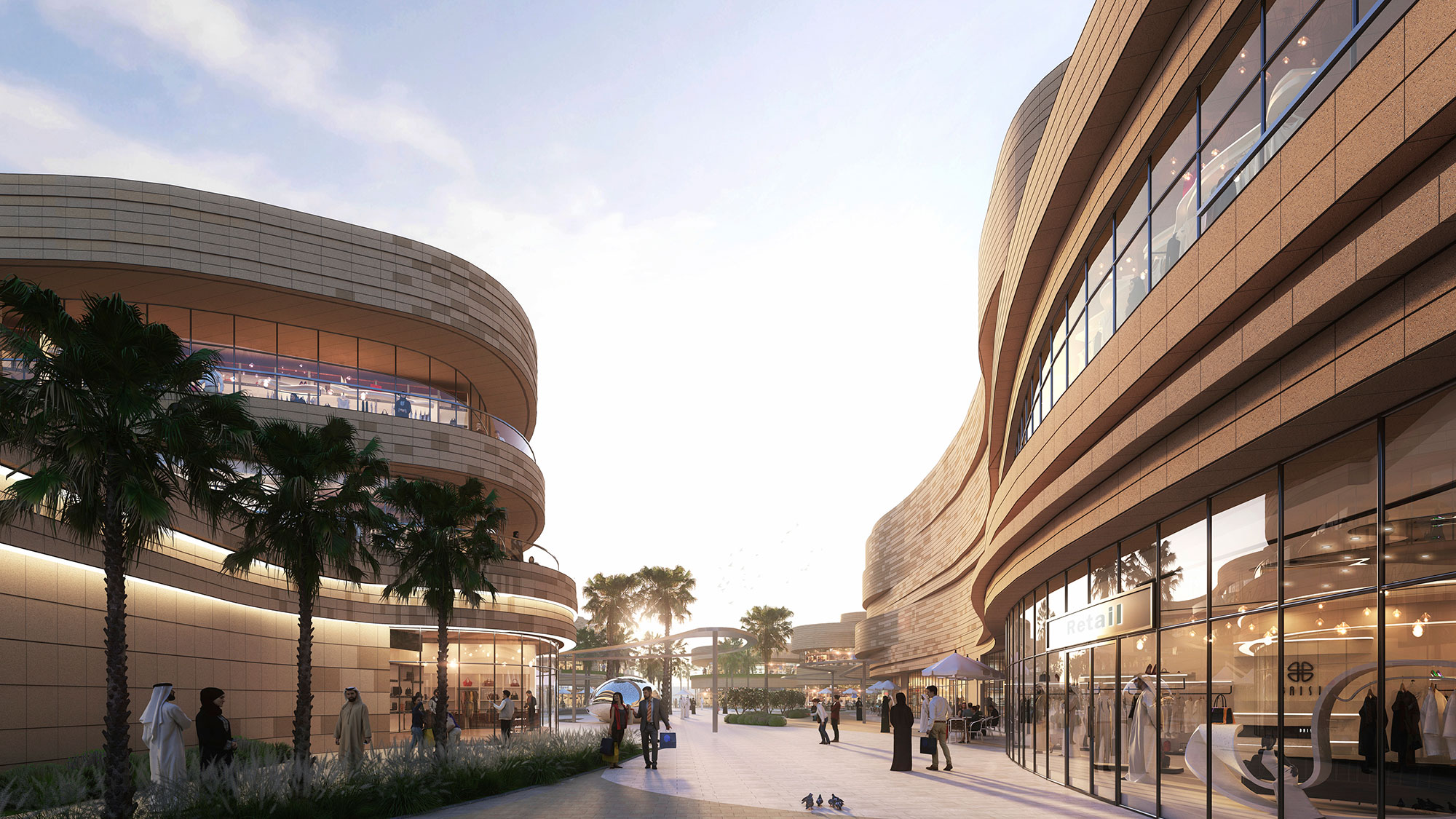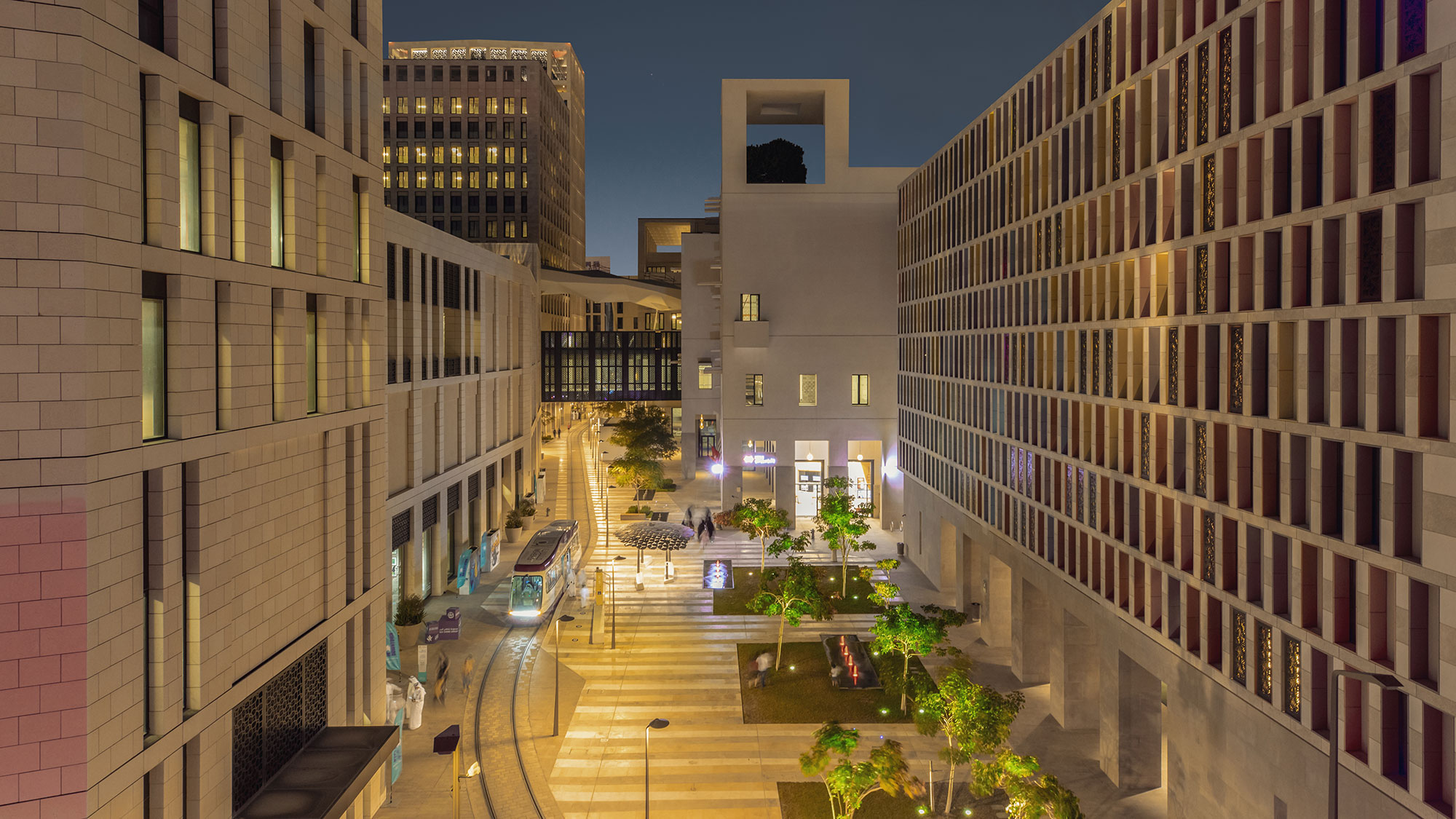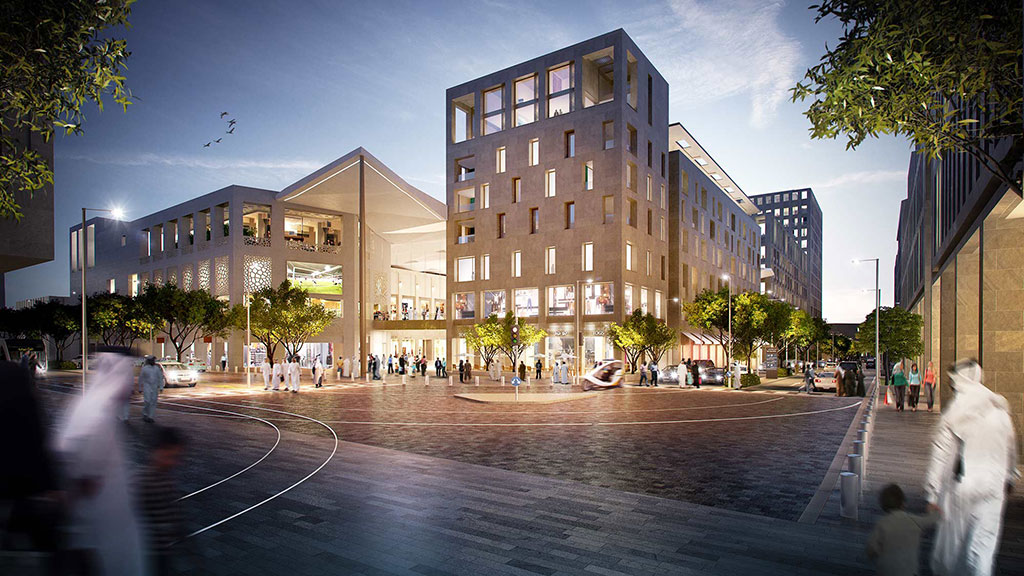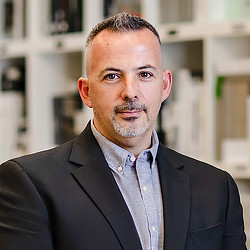Regional Revitalization: Designing for Impact in the Middle East
September 17, 2024 | By Tim Martin and Steven Velegrinis
The Middle East is experiencing an architectural renaissance. With the architectural services market in the region growing at a compound annual growth rate (CAGR) of 7.61% over the next five years, driven by increased investment, the emergence of giga-projects, and a growing demand for sustainability, the region is on the brink of a design transformation that could redefine urban living.
Embracing Human-Centered and Culturally Rooted Design
In recent years, there’s been a shift away from the traditional enclosed, large-scale mixed-use developments that once dominated the Middle Eastern landscape. This trend towards more open, inclusive designs aligns with sustainability goals, such as reducing energy consumption by minimizing the need for extensive cooling of large atriums and creating physical connections to the outdoor environment. This approach not only encourages physical movement but also reestablishes a connection to cultural principles that have long been part of the region’s architectural heritage — principles that may have been overshadowed by rapid modernization.
One exemplary project embracing these values is Riyadh’s new premier lifestyle center, 1364ah. Located adjacent to the eastern gate of the Diplomatic Quarter, this mixed-use development draws inspiration from the natural strata formations of Riyadh’s rugged landscape. The ground level is a free-flowing, vibrant courtyard designed to invite public engagement, featuring water elements, shading, and landscaping that create an intimate environment with naturally shaded outdoor seating, event spaces, and community gathering spots.

The Middle East’s 20-Minute Cities: Innovation and Inclusion
The concept of the 20-minute city, where all essential services and amenities are within a 20-minute reach, is gaining traction globally, and the Middle East is no exception. Cities like Dubai and Doha are at the forefront of adopting this concept. The region’s unique challenges such as its arid climate and reliance on personal transportation have given it an additional demand for this style of development.
For the 20-minute city concept to succeed in the Middle East, urban planners must innovate, creating bespoke solutions that integrate sustainability, inclusivity, and specialized design while ensuring accessibility and connectivity. Msheireb Downtown Doha, the world’s first sustainable downtown regeneration project, is a prime example of how this concept can be successfully implemented. This $5.5 billion, 310,000 square meter project blends modern construction techniques with cultural and contextual precedents for sustainability. It preserves heritage sites, uses local materials, leverages natural light and ventilation, and adopts green technologies to reduce energy consumption by 32%.

Addressing Urbanization and the Cost-of-Living Crisis
Urbanization in the Middle East is accelerating rapidly, with cities like Riyadh, Dubai, and Doha experiencing substantial population growth. This surge is increasing the demand for housing, leading to skyrocketing property prices and rental rates, a trend exacerbated by the global cost-of-living crisis. In 2022, inflation in Turkey, for example, reached nearly 80% — the highest level in 24 years — prompting a “value hacking” mindset among consumers seeking to maximize their budgets without sacrificing quality.
To address these challenges, urban planners in the Middle East are focusing on creating affordable, well-planned urban housing through strategic partnerships between mission-driven developers, housing authorities, and non-profits. This approach is crucial for ensuring that the benefits of urban revitalization are accessible to all residents, not just the affluent.
Workplaces as Compelling Destinations
Key markets in the Middle East, particularly the UAE and Saudi Arabia, have become prime locations for global firms to establish regional headquarters, leading to the design and delivery of some of the most innovative workplaces in the world. The Visa CEMEA Headquarters in Dubai is a standout example. Designed with both user experience and regional context in mind, this office promotes mobility and flexibility through alternative workspaces and incorporates the latest technology, biophilic design elements, and amenities that enhance worker well-being.
As designers, we are increasingly focused on creating spaces that not only fulfill their functional purposes but also support mental health and emotional well-being. The demand for office spaces that integrate personal comfort with aesthetic appeal is expected to grow as more clients prioritize environments that positively impact health and wellness.
Regeneration: The Future of Sustainable Design
Sustainable design in the Middle East is no longer just a responsibility; it’s an opportunity to create resilient urban environments that contribute positively to our planet’s health. The shift towards regeneration, which involves not only mitigating the environmental impact of urban development but also providing additional ecosystem services and biodiversity benefits, is becoming a key focus.
This approach includes integrating renewable energy sources, water-cleaning systems through nature-based solutions, and large-scale regreening initiatives. By evaluating the economic value of these services and implementing them at scale, cities can be recast as solutions to climate change rather than contributors.
The Path Forward
As the Middle East continues to evolve, the integration of cultural heritage, sustainability, and innovative design strategies will be crucial in shaping the region’s urban future. The 20-minute city concept, when tailored to the region’s unique needs, has the potential to create vibrant, inclusive, and sustainable communities that enhance the quality of life for all residents. Urban planners and designers in the Middle East must continue to push the boundaries of what’s possible, creating cities that not only meet the demands of today but also anticipate the needs of tomorrow.
For media inquiries, email .

